You Can Have Both: Native Habitat and a Gorgeous Garden
March 26, 2020
How often do you come to the big AHA! moment as you’re going about your regular routine? Not so often, right? It takes space to see beyond the habitual. It might be something you already knew, but you see it in a fresh way because of a vacation, a chance encounter or a break in your everyday groove – quarantine’s positive side.
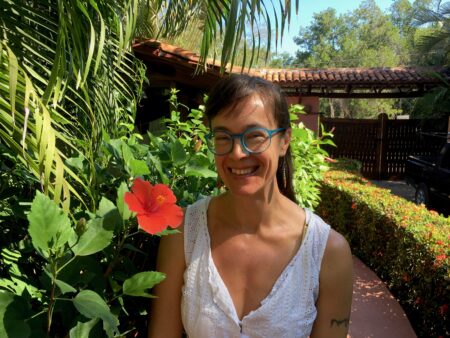
my chance encounter with the beauty of hibiscus
This happened to me recently. I had a garden design nearly complete when our scheduled vacation to the sea and sun came to interrupt my work flow with a big old break. The day I returned from my tropical retreat to work, I saw what had been nagging me about the planting plan. But, I came to it with fresh eyes and, BAM! a new working theory was born.

blue mind, refreshed perspective
My plant lists had been winnowed down and communities developed. Pacific Northwest natives were predominant. There are so many important and meaningful reasons to plant more natives in our landscapes: they host specific insects and birds that need what only they offer, they’re suited to our local climate, they look like they belong, they remind us of the nature we visit on hikes, they’re being displaced by invasives, on and on. Yes, it’s super important to plant native plants.
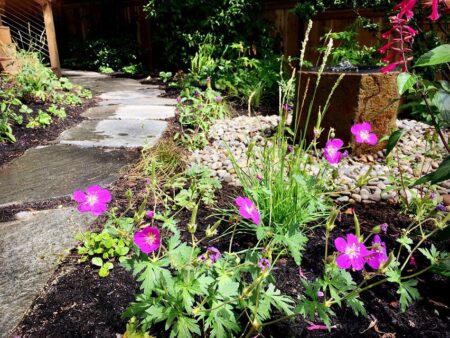
western geranium in Don & Erica’s Native Habitat Garden
However, there was something off balance with the plants I had going into this planting plan. Early spring is big and showy in Oregon forests, which is essentially what I was modeling this garden on. Later seasons, with our reliable summer drought, can look dusty and tired. Also, surprisingly, deer like to chow down on many natives and I knew they’d be passing through this newly planted front yard for a taste.
It’s a word that reminded me of the wisdom hidden in my ornamental gardening roots. The word is STALWART. Regardless of nativeness, a stalwart garden plant is reliable and hardworking. It’s known for its consistent vigor. It shows how tough it is by enduring limitations with its full beauty intact. A stalwart plant is unshakeable, dependable, and resilient.
Why would you exclude something with stalwart qualities from your planting on the basis of non-nativeness alone?
In my work creating plantings for habitat and beauty, I consistently face this one big question: How to balance two desires, the desire for native habitat and the desire for year round good looks.
Here’s my new answer to this question. I’m calling it the rule of thirds. Are you ready? I hope it blows your mind like it did mine when I sat down and saw it clearly after vacationing.
Include at least a third native plants and at least a third stalwart plants in your plantings.
The last third can be made up of more of what you love, be it more natives, more stalwarts or others that jump into your heart and just seem right for the place. Because you have to have fun. And all rules need some flexibility, especially in the garden.
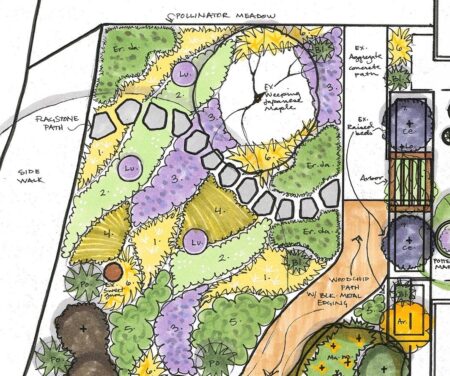
detail of the Quirky Habitat Garden design where the rule of thirds was born
This way, you’ll be sure to have a balanced planting. One where native pollinators AND your world-weary soul will find refuge. At the heart of garden-making is the urge to connect with nature. I don’t believe we can do that if the plantings are unattractive. So, sometimes, under certain site conditions, like where deer browse or in an urban heat island, we need to include some stalwart, non-native plants. I’m responding to the argument for 100% native plants here. But, I’m not speaking against native plants by any means. Balance, my friends. “Both / and”, not “either / or”.
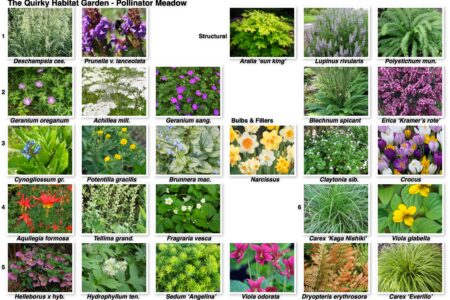
the combos in this design are a balance of native and stalwart plants
A parting note on some plants I adore that are both native to the Pacific Northwest, and stalwart garden growers:
~I love lanceleaf selfheal (Prunella vulgaris spp. lanceolata) and so do the bees. It’s our native subspecies of the weedy and common prunella. Notably, it has bigger, showier blooms than the weed. It’s happy in sun or shade (hello, super stalwart!). You can start lanceleaf selfheal from seed or starts. Willamette Wildlings nursery is an excellent local source for both.
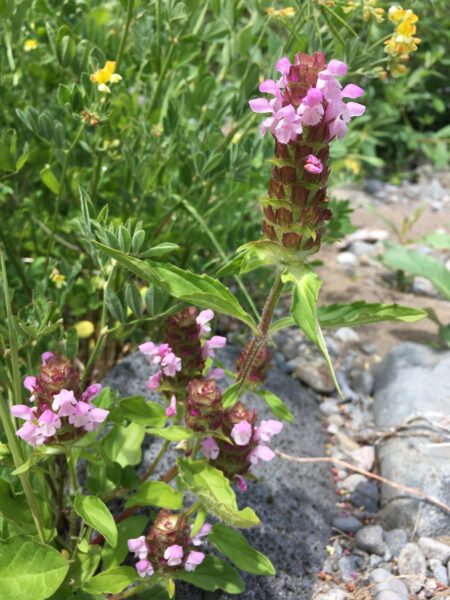
typically purple, I found this pink form of prunella camping last summer
~Wild strawberries, both beach strawberry (Fragraria chiloensis) and woodland strawberry (Fragraria vesca) are perfect for weaving around your perennials and shrubs. They suppress weeds by covering bare ground, provide a favored source of pollen for some very interesting little native bees and even offer something for you to nibble as you make your garden rounds.
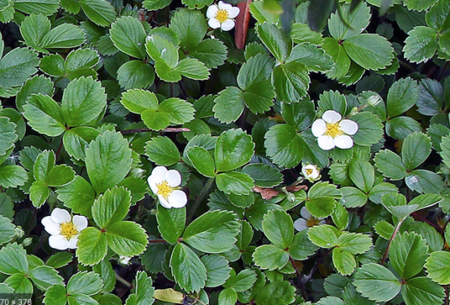
Fragraria chiloensis
~And, please, include more lupines in your planting plans. The common nursery hybrids (like the gallery series) are variously colored hybrids of our native big-leaved lupine (Lupinus pollyphylus). Why not try the wild original? It looks at home with yarrow and tufted hair grass (two more stalwart natives!). I’m also impressed by the resilient good looks of streambank lupine (Lupinus rivularis). If you need a bulky bloomer in a moist site, this is it. Absolutely beautiful!
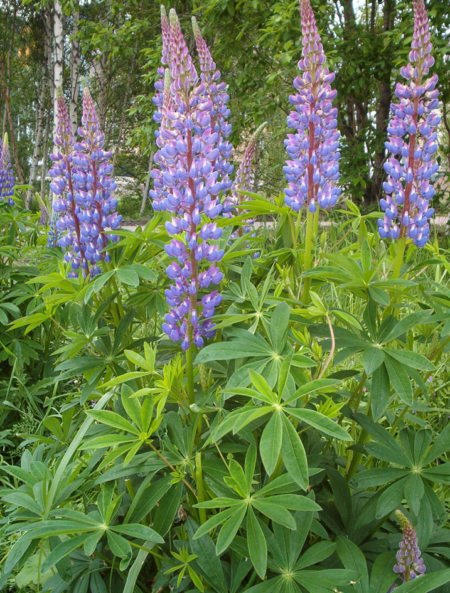
Lupinus polyphyllus
Long before I discovered this guiding rule, I made gardens that were true to it. Here’s some photos from Richard’s Woodland Opening Garden as example of what it can look like to mix native and stalwart plants:
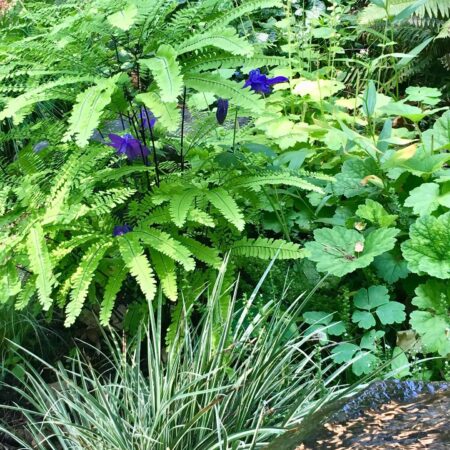
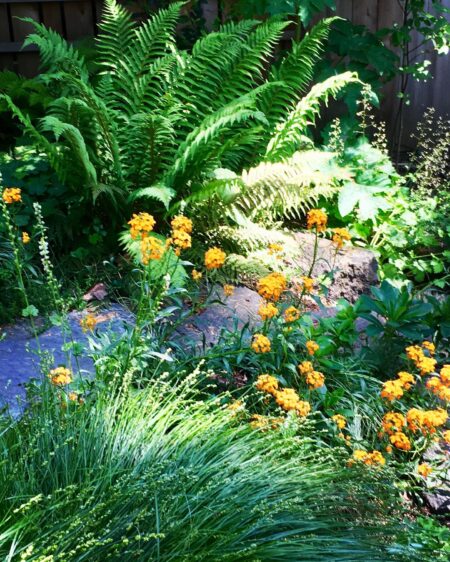
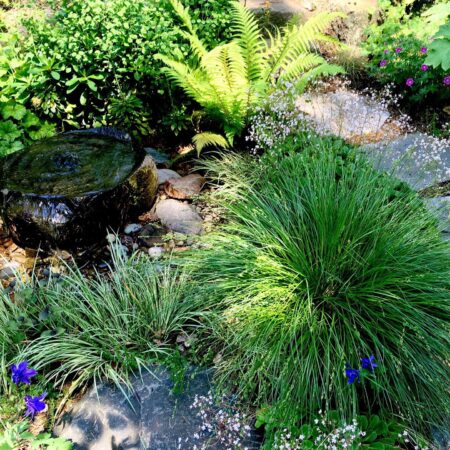
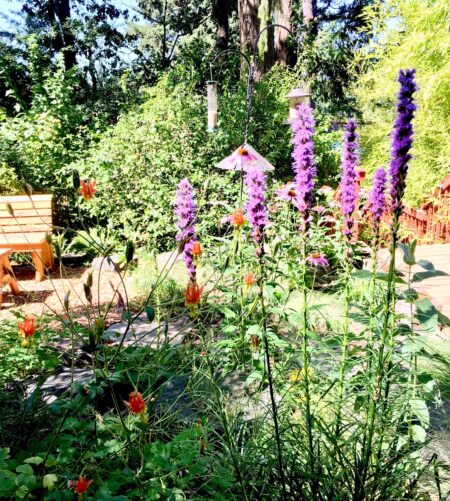
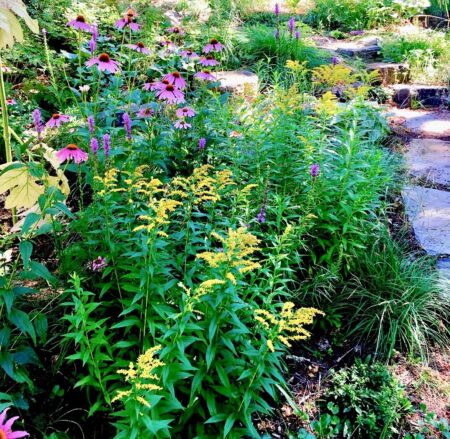
Friends, keep planting. Whatever you put in the ground and tend to with care benefits life. May your garden be a place of vigor, not of righteous dogma. There are as many “right” ways to garden as there are gardeners and bits of land they serve. I hope the rule of thirds helps you find a balance of soul-soothing beauty and ecologically considerate habitat creation. Because both are well needed now.
Tell me, are you thinking you’ll plant more native or more stalwart plants to get your garden in balance? Leave a comment below.

Great article. It’s interesting how helpful the rule of thirds can be. It’s even helpful for gardening. Thanks for the suggestion.